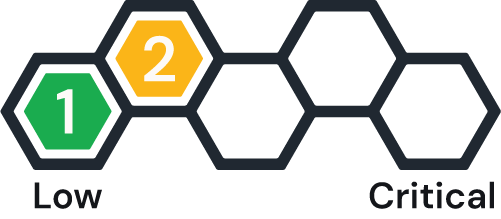Ahead of the Curve: Learning from Cyber Preparedness Done Right
After Firefox was targeted at Pwn2Own 2025, Mozilla responded with same-day patches - a textbook example of proactive cybersecurity. Learn how tabletop exercises, vulnerability testing, and team communication can keep your organization ready for real threats.
Risk Level
Read Time
When it comes to modern cybersecurity incidents, the conversation around prevention often begins too late. By the time the public becomes aware of a breach - sometimes months or even years after it occurs - critical data may already be lost. That’s why it’s essential to showcase examples of effective cyber preparedness. These real-world cases offer valuable insights into how organizations can proactively protect themselves before an incident arises.
Firefox in the Spotlight at Pwn2Own 2025
In May, Mozilla’s open-source browser, Firefox, was one of several high-profile targets at the annual Pwn2Own computer hacking competition hosted in Berlin, Germany. Alongside industry giants like Google Chrome, Microsoft Edge, and Apple Safari, Firefox stood out—two separate teams focused their efforts in attempting to exploit the browser.
During the event, researchers uncovered two previously unknown content-process vulnerabilities. Although these exploits couldn’t break out of Firefox’s sandbox environment, Mozilla released patched versions of the browser the same day the second exploit was demonstrated - a model example of rapid and responsible incident response.
Mozilla’s quick action serves as a powerful reminder: proactive testing and timely responses are critical to maintaining a secure environment. You don’t need to be a global browser vendor or be targeted in international security contests to adopt this mindset.
Proactive Testing: A Best Practice for Every Team
One of the most effective ways to uncover hidden vulnerabilities is through active system testing and tabletop exercises. These simulations offer low-risk opportunities to assess your team’s preparedness, reveal system weaknesses, and improve communication across departments.
Here are a few key benefits of tabletop exercises:
Identify Weaknesses Before Attackers Do
Simulating real-world scenarios allows your team to uncover potential gaps in defenses before a malicious actor is able to exploit them. Whether it's a large-scale event or an internal drill, weakness identification is key to preventing future attacks.Strengthen Communication During Crises
Effective incident response hinges on seamless communication; by participating in tabletop exercises, teams are able to practice each individual’s expected role and responsibility in a low-risk testing environment.Increase Threat Awareness
Unknown threats are, by nature, unexpected; it is often incredibly difficult to predict potential threats in an environment that is not actively managed. Regularly engaging in simulated incidents builds your team’s familiarity with systems and fosters a culture of security awareness.
Practical Resources for Every Business
Earlier this year, Hive Systems shared low-cost cybersecurity tips for organizations of all sizes. One recommendation was to take advantage of free tabletop exercises offered by the Cybersecurity and Infrastructure Security Agency (CISA). These resources simulate a wide range of threats and are a great starting point for building a preparedness program.
Looking for exercises that are more relevant to your unique environment? Hive Systems offers customized tabletop exercises to help you build a smarter, more resilient organization.
Get in touch with us today to take the next step in protecting your systems - before the next threat hits.
Follow us - stay ahead.




